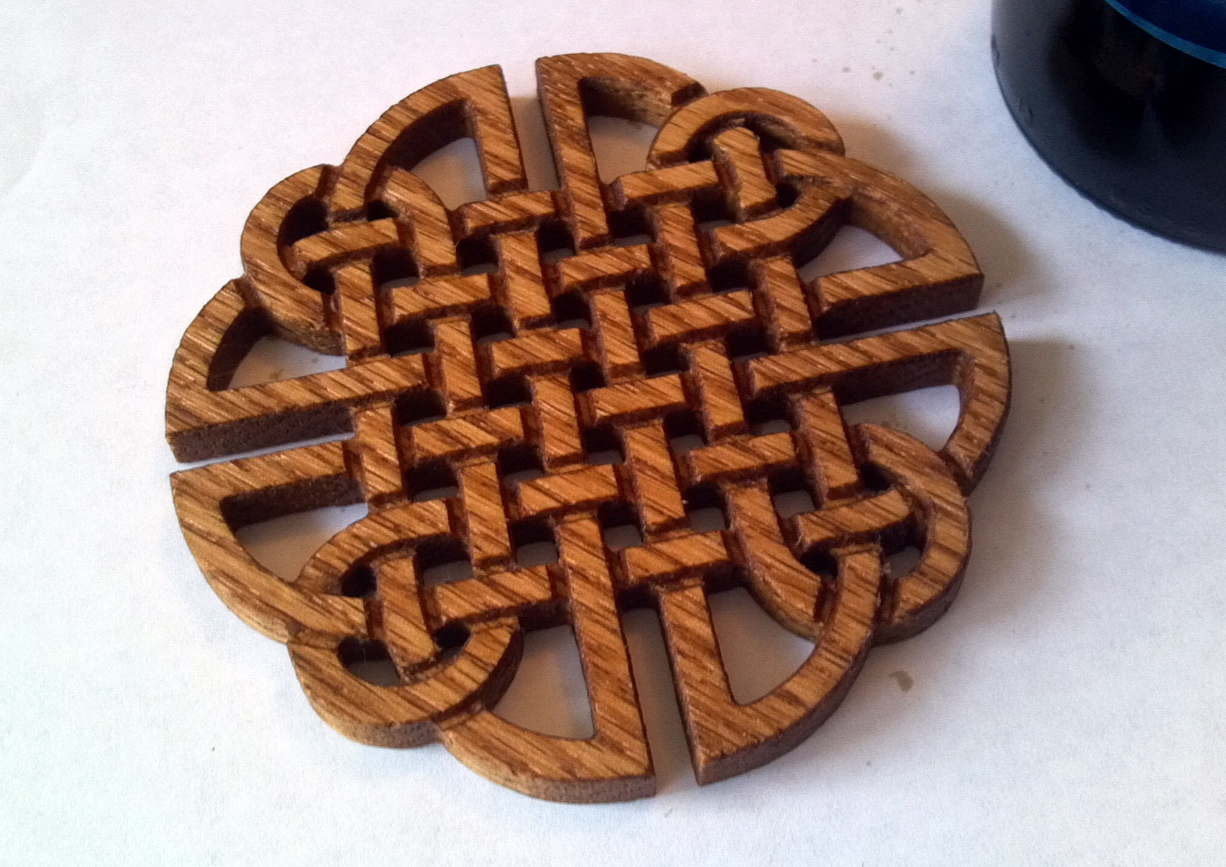Inventables is located in Chicago. If you’ve ever been to the city on St. Patricks day you know that everything turns green. The Chicago River is dyed green, people have green hair, they wear green clothes, and even drink green beer and Shamrock Shakes from McDonalds! We have a bunch of makers at our company and a sometimes we drink beer.
While everyone else was out running wild in the streets our very own Bart Dring inventor of MakerSlide was busy in his workshop getting into the St. Patrick’s day spirit maker style. He came up with this solid Oak Celtic Braid Beer Coaster and carved it using V Carve Pro and V Bits. In this tutorial I’m going to walk you through how Bart made this one.













